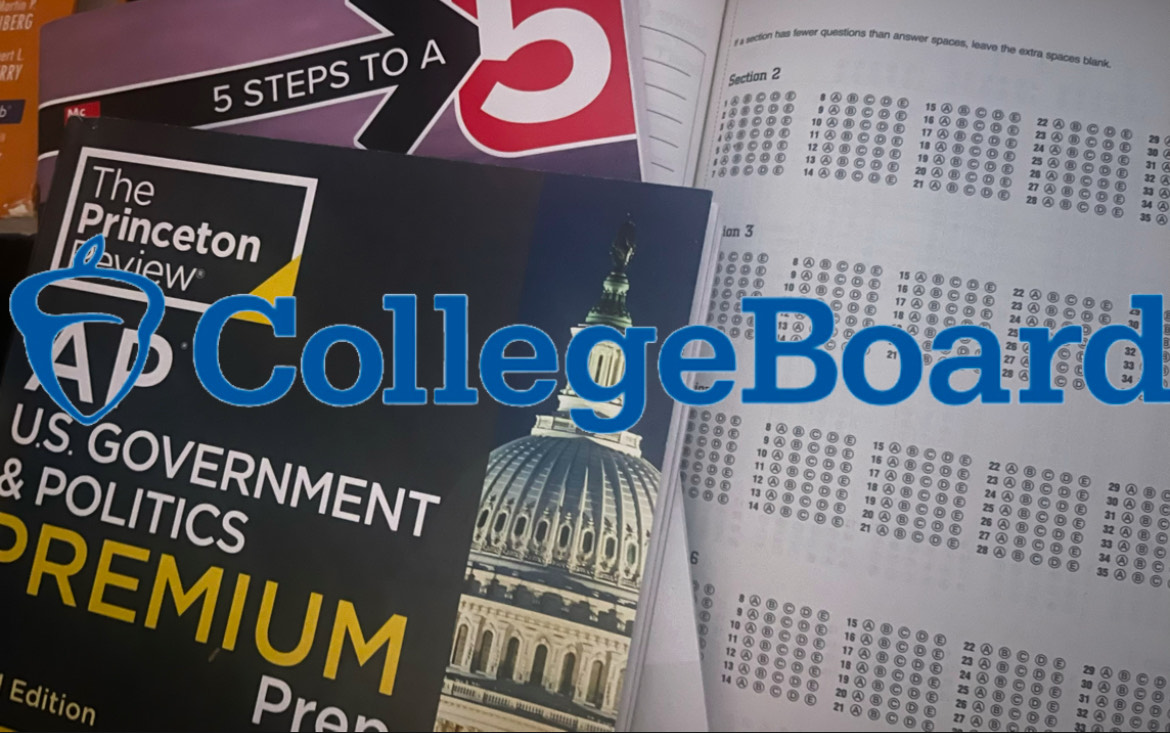Rising Controversy
A debate has been emerging among high school students and teachers in the United States. One regarding a widely used, and as of recently, controversial organization – College Board. College Board is a nonprofit organization founded in 1900 that administers and oversees various standardized tests and educational programs. It is most commonly known for its role in the SAT and Advanced Placement (AP) programs, which aim to assess student readiness for college and offer college-level coursework in high school. With its extensive reach and influence in the educational landscape, College Board is seen as a key player in shaping academic pathways and opportunities for students across the United States.
However, College Board has faced significant criticism regarding its financial practices and its claim of being a nonprofit organization. Despite their designation, College Board reported revenue exceeding $1.2 billion in 2019, with considerable profits generated from test fees and services. For instance, CEO David Coleman earned $1.67 million in 2019, and 9 other members of the organization received over $500,000 each. The organization has also been criticized for high executive compensation, with some top executives earning salaries well into the six figures[1][2]. This raises concerns about how the organization allocates its funds.
A Dark History
There is also a dark history behind the organization, one that reflects the original intentions of the company. The SAT was developed in 1934 by Carl Brigham, a psychology professor at Princeton University. Brigham, who was involved in the Eugenics movement, had previously helped design the “Army Alpha Test” given to millions of World War I recruits. Based on data from this test, he published “A Study of American Intelligence,” in which he claimed “the decline of American intelligence will be more rapid than the decline of the intelligence of European national groups, owing to the presence here of the negro. These are the plain, if somewhat ugly, facts that our study shows. The deterioration of American intelligence is not inevitable, however, if public action can be aroused to prevent it [3].” The “public action” being, of course, segregation. Brigham believed that maintaining the “purity” of the “Nordic races” was essential to preserving American intelligence and viewed Jews, Blacks, Latinos, and Italians as contributing to this decline. In 1934, he (only slightly) adapted the Army Alpha test to create the Scholastic Aptitude Test, which later became known as the SAT we all know today. In other words, the SAT was created to keep minorities out of school. Though obviously the company has made reforms, they are yet to address their racist history.
Rising Costs and Exploitation
The cost of SAT and AP exams has increased over the years, creating a financial burden for students and schools, which contradicts the idea of equitable access to education. The cost of an AP exam is $95, with additional charges for late registration ($40) and cancellations ($40). Sending AP exam scores to colleges costs $15 per school after the first four. Similarly, the SAT exam costs $52 without the essay section and $68 with it. Students can also pay an extra $18 for the SAT Question-and-Answer Service or $15 for score verification by phone. These added fees push the cost of the SAT to as high as $233 for students opting for the “premium package” — which includes late registration, phone score retrieval, and multiple score verifications. Given these high fees, it becomes clear that College Board is generating substantial profits from its students, often at their expense. Between 2007 and 2019, College Board’s net assets grew by 276%, from $565 million to $1.56 billion, with annual profits consistently exceeding $50 million. These factors suggest that College Board’s operational model may prioritize profit generation over its stated mission to serve educational needs.
It’s not unheard of for a student’s financial position to get in the way of their education. AP Government and Politics teacher, Christoper Zawadski, says “There is a correlation between academic success and finances. You look at the top schools in Connecticut, these tend to be the richer communities, why is that so? Well, when some people are worried about putting food on the table and others are taking their kids to European museums, who do you think is going to score better on the SAT?” On both AP and SAT exams, students from wealthier backgrounds consistently do better than lower-income students. The average SAT score of a student whose family income is between $40,000 – $60,000 a year is 1070 while students whose families make over $200,000 dollars a year have an average SAT score of 1230. A Harvard-based team of researchers found that wealthier students are 13 times likelier than the children of low-income families to score 1300 or higher on SAT/ACT tests[4].
Despite the increase in AP costs, it is still cheaper to take a college-level AP class than most colleges would have a student pay for a normal class in college (however, this raises its own questions about the increase in student fees and the rising cost of college in America). AP Biology teacher, Karen Martino says, “It’s an excellent deal to pay $100 [for the AP exam] and get eight college credits. Most schools recognize students who do not have the ability to pay that, but there are funds [from the school] that pay it. I think it’s important that we advertise that, it’s great for students to take advantage of. I don’t think it’s a nonprofit, it’s very top-heavy. A lot of the executives at the top make a lot of money and more of that money should be dispersed among the students. I think that College Board should provide more equity as far as financially, like if you go to a certain school where there is a lower socioeconomic status then that entire school should have free College Board [programs]”. Despite the growing number of students taking AP and SAT exams—5 million students took AP exams by 2019, up from 2.5 million in 2007—the organization has raised prices and added fees, capitalizing on this increase in test-takers rather than using its growing financial reserves to reduce the financial burden on students. Between 2007 and 2019, College Board made a profit of between $37 and $139 million per year, with $38 million of that coming from investments alone.
The SAT: How Accurate?
Many consider the SAT just a small plot on a much larger graph. AP English teacher, Brooke Mazzarela says, “I think the SAT is one small dip in the bucket; there are a lot of different ways to show intelligence and understanding. To me it is not an accurate representation [of a student’s capabilities] it’s just one small score. I also don’t believe that [colleges] make it that important anymore, we’re starting to move away from it and some schools are SAT optional. I like to believe that admission officers look at the whole student; your transcript, extracurriculars, essay, recommendation letters, and that SAT scores may just make you more competitive among the pool of students applying.”
Studies have shown that the SAT is not an effective evaluation of a student’s academic performance[5][6].Nevertheless, it is sold to millions of students, as it remains an integral part of the college admissions process. The College Board is often considered a monopoly in the standardized testing and college admissions landscape due to its dominant control over key assessments like the SAT and AP exams. By providing widely recognized and essential testing services, the organization holds a significant share of the market, limiting alternatives for students and educational institutions. “Well what is the definition of a monopoly?” questioned AP Spanish teacher Laura Luther, who has been teaching the course for over 9 years. “It is one group of people having control over the entirety of one certain thing with no other participants, so they meet the definition, yes.”
This centralization of testing services allows College Board to set standards and pricing with little competition, creating barriers for new entrants and reducing choices for consumers. Additionally, its longstanding relationships with colleges and high schools reinforce its market position, making it a central figure in the college admissions process.
College Board’s role in the education system is a complex one, marked by both its positive contributions and significant controversies. On one hand, the organization provides valuable resources like the SAT and AP programs, which offer students opportunities for college preparedness and credit. However, its financial practices, including high fees for exams and substantial executive compensation, raise concerns about its commitment to its nonprofit status and equitable access to education. Moreover, the centralization of testing services and the monopoly-like control College Board holds in the standardized testing and college admissions process limits choice and fosters inequality. While some educators argue that the SAT is no longer a primary factor in admissions, the continued prevalence of the test and the rising cost of educational services highlight broader issues in the U.S. education system. Ultimately, College Board’s influence over academic pathways and its financial practices continue to spark debate, emphasizing the need for reform and greater equity in educational opportunities.



